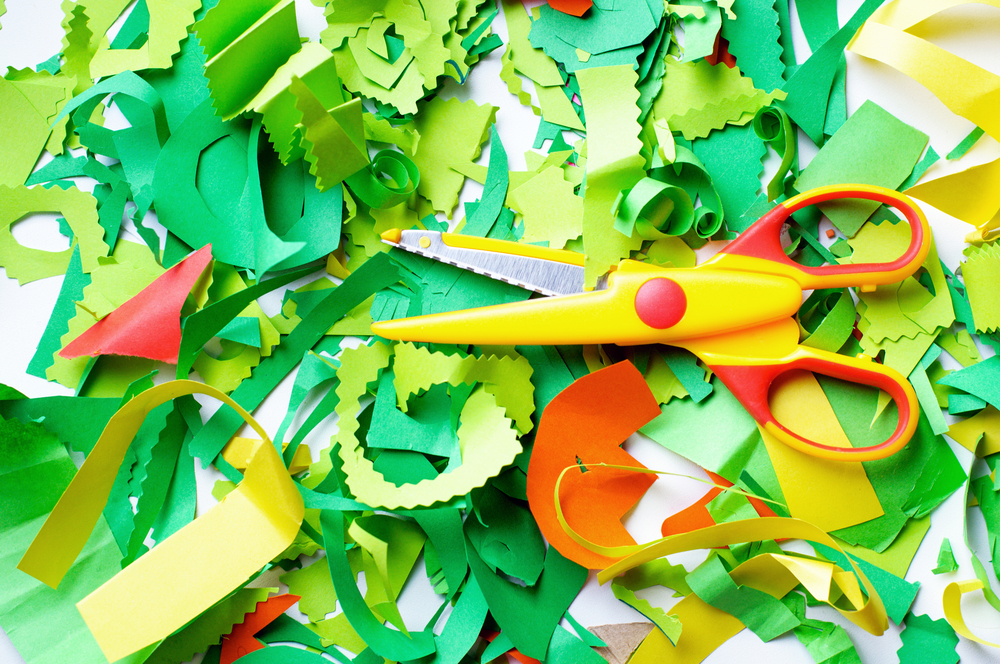Fine motor skills involve the coordination of small muscles, in movements, usually involving the synchronization of hands and fingers, with the eyes. Here are ideas for some easy, engaging indoor activities that can help toddlers and preschool aged children hone such skills.
1. Cut with scissors. Using scissors helps to enhance bilateral coordination, which is the simultaneous use of both sides of the body in a controlled manner; children cut with scissors while holding and controlling the paper with the other hand. While scissor use may not begin until children are in preschool, toddlers aged two or so are old enough to begin learning how to cut.
Draw some large and simple patterns, such as circles, swirls and zig zags, with a bold marker and have your child cut along these lines. Or simply let them cut up paper into strips or shapes. Make sure you have child-safe scissors such as these from Melissa and Doug.

2. Play with play dough. Kids love squishing, rolling, cutting and moulding dough. And when they do, they are strengthen finger muscles (and benefitting from the sensory experience). Here’s an easy play dough recipe:
Mix 2 cups of all purpose flour, 2 tablespoons veggie oil, ½ cup of salt and about a cup of lukewarm water. Add more water or flour to get the consistency right. Divide the dough into several balls, make an indentation in the middle of each, add a couple drops of food colouring and knead to distribute the colour. Store in an airtight container; dough should keep for a month without refrigeration.

3. Lace a pattern. This is great for getting young children to sit, concentrate and focus on a task. It is quite a mindful process so it benefits them in many ways. Using a piece of cardboard, draw out a simple picture of something your child likes and recognises (too many lines and diversions will make it tricky to follow).
Once you have the basic pattern in place, punch holes using a hand held hole-punch — larger, wider holes for younger children, smaller and closer holes for older ones. With a selection of coloured yarns, these sewing patterns can either be hand threaded or threaded using plastic needles available from craft shops.

4. Create DIY puzzles. These are inexpensive and fun to make, and kids can choose to use their own drawing or a picture from a magazine. Have your child cut the image up and then re-assemble the puzzle by gluing the pieces onto cardboard. You could also affix the image onto cardboard before cutting it up into a reusable puzzle.

5. Colour, scribble, draw and paint! While the dominant hand imanipulates the implement, as the other hand is holding down or grasping the paper or material, kids are building fine motor skills and good hand-eye coordination. You’ll find that an investment in a good set of finger paints, brushes and crayons will go a long way! And your canvas can be anything – scrap paper, cardboard panels, paper boxes, toilet paper rolls…
Register your email address here and we’ll notify you when a new article gets uploaded.













